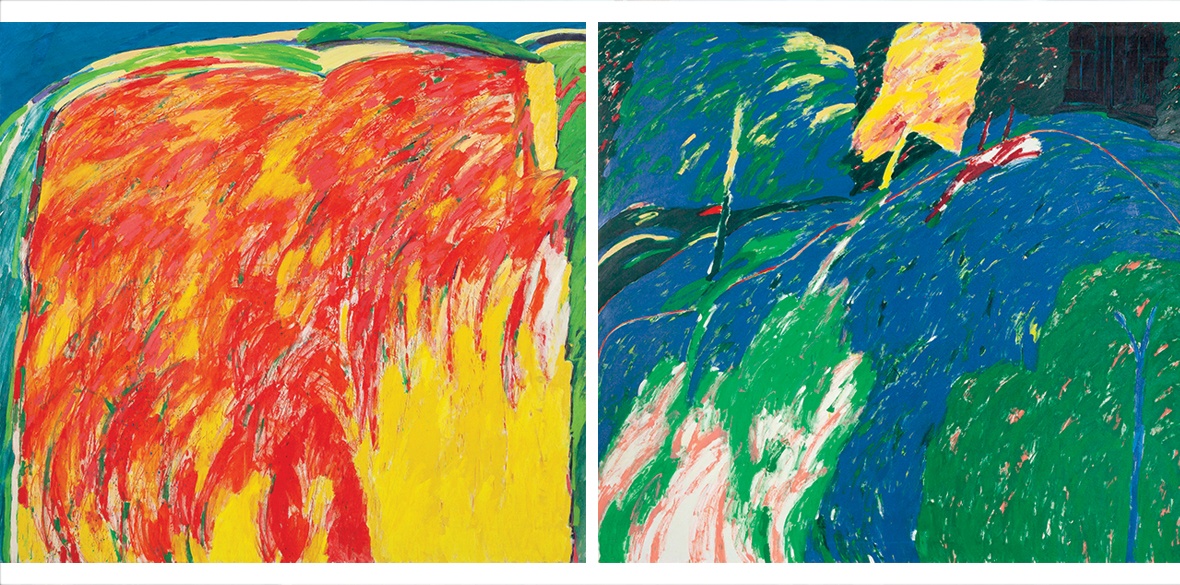This is the last article you can read this month
You can read more article this month
You can read more articles this month
Sorry your limit is up for this month
Reset on:
Please help support the Morning Star by subscribing here
William Crozier: A Heightened Vision of Nature, 1977-1980
Flowers Gallery (21 Cork Street)
BORN in Glasgow to working-class Irish parents and educated at the Glasgow School of Art, William Crozier settled in London where he established a reputation as one of the most interesting artists of his time.
His peripatetic life took him to Dublin (he took Irish citizenship) and Paris in the 1950s, then to Andalusia in 1963, locations which proved central to his development as an European artist. Later he divided his time between West Cork and Hampshire.
As for many of his post-WWII generation — he was 15 when it ended — its horrors, concluding in the atomic bomb, were reflected in deep anxieties.
In Crozier’s case the populating canvases with haunting skeletal figures was influenced by visits to Auschwitz and Belsen in 1969.
These paintings foreshadowed the German neoexpressionists of the 1980s — Georg Baselitz in particular — who resisted US art incursions into Europe.
In the 1970s, in Paris, Crozier absorbed the ideas of the influential at the time existentialism and its leading proponent Jean Paul Sartre, who wrote: “Man is condemned to be free, because once thrown into the world, he is responsible for everything he does.” Crozier understood well that responsibility.
He had a far greater affinity with European art than the then vigorously US-promoted abstract expressionism.
Back in Britain in the late 1970s, Crozier lectured at the Winchester School of Art and painted the landscape on the outskirts of the city, completing a series of canvases collectively known as the Watermeadows. They offer a mesmerising visual experience of great calm and lyricism.
Characterised by a deluge of colour, the light-filled landscapes are engulfed by the abstract beauty of the ever-changing nature.
There is much energy in the kinetic, angular compositions that seem to mimic nature’s own movements, be it a swaying field of wheat or poppies or a canopy of trees — nearly indistinct but not quite abstract.
These canvasses exude confidence and virtuosity, the technical fluency is to be savoured.
“Everything I paint comes from what I have seen. There must be an initial visual revelation, a moment of visual understanding of the order, history, passion and human endeavour revealed in a corner of a field, the shadow beneath a wall. The miraculous must be seen to appear, the ordinary must be transformed into the extraordinary eternal,” Crozier would write.
In 1979 he spent the oppressively hot summer in New York where he painted cityscapes at dusk, amid a “wild and dangerous and inhospitable” ambience.
New York had, however, “detonated” in him a renewed clarity about and excitement for European painting.
This would be reflected in canvasses like Gramercy Park or Union Square, New York, and later in his 1980 Homage to [Andre] Derain or Late Evening, Haute Provence, 2010.
Crozier had an enduring enthusiasm for landscape, whether Mediterranean, Irish or English, and he would summon the powerful experience of nature with an emotional intensity few painters could or indeed can articulate.
This has a particular resonance today when nature is being disfigured daily by climate change placing it on the verge of oblivion.
Yet Crozier had, optimistically, unearthed colour in the enveloping darkness. His canvasses should serve as a timely reminder not only of the fragile beauty that surrounds us but more importantly how it sustains and heals us.
Until July 9 2022. Free.











